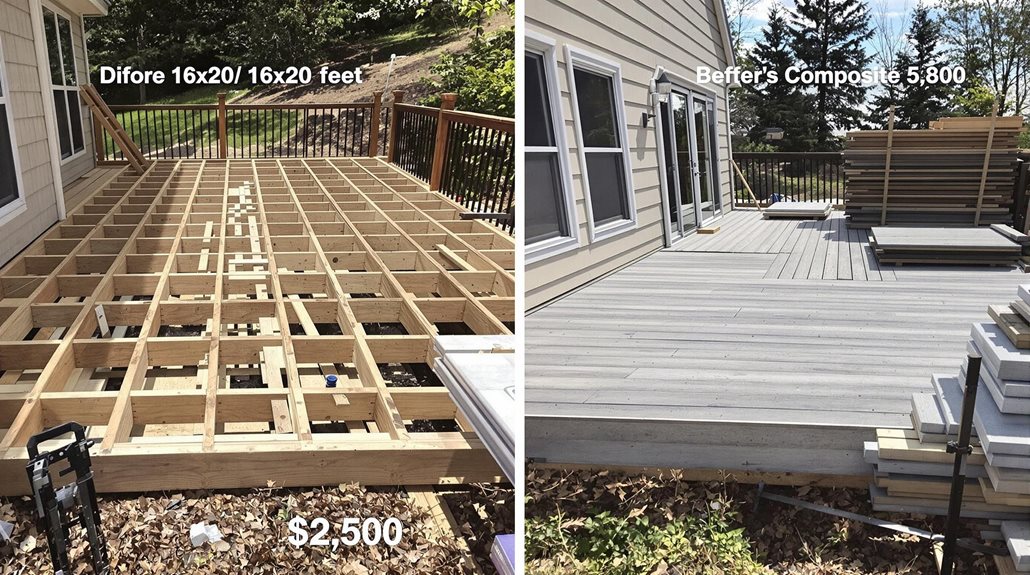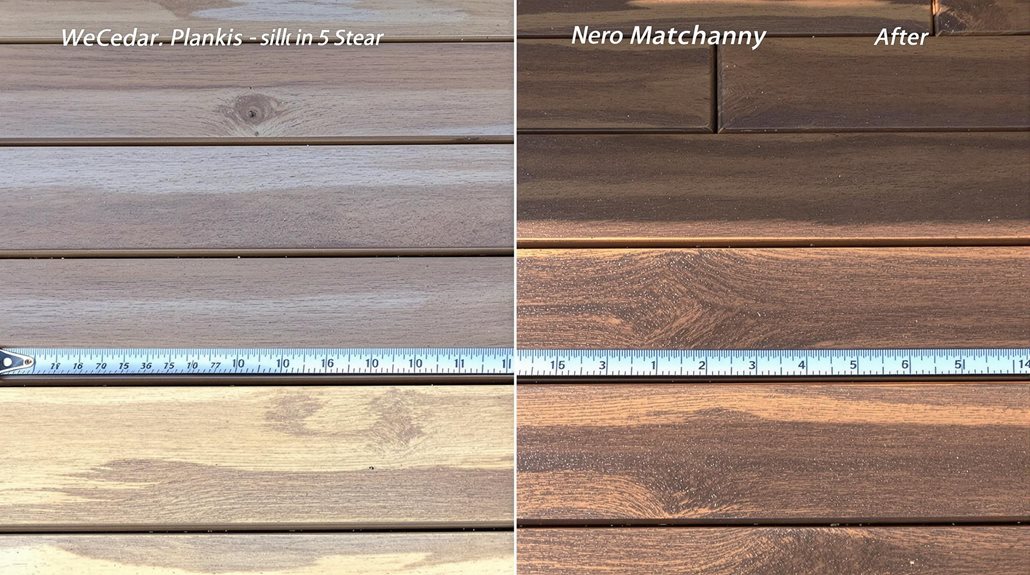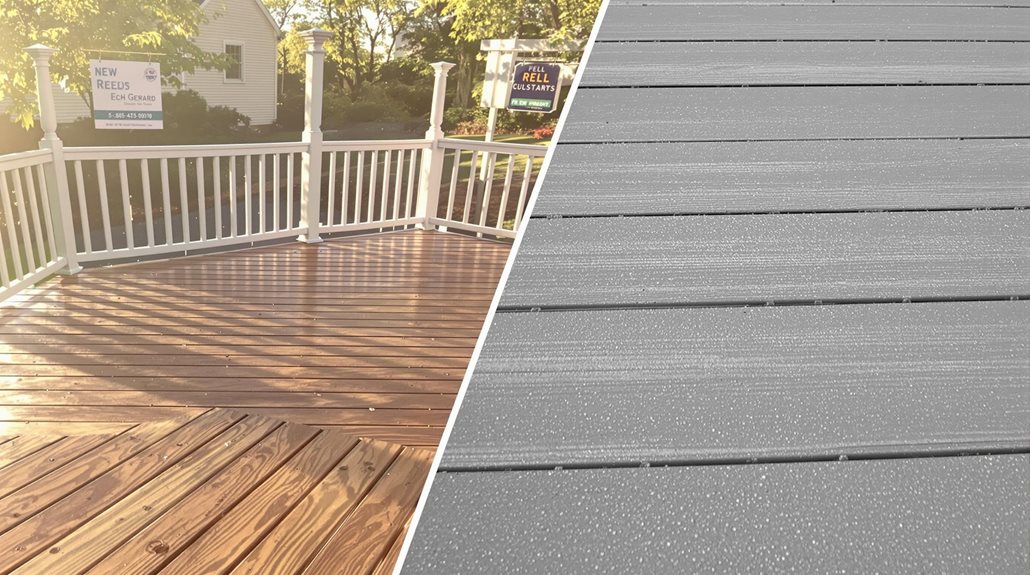The Complete Guide to Deck Building Costs: Wood Vs Composite Materials in 2025
When considering deck building costs in 2025, homeowners must weigh the differences between wood and composite materials. Wood decks are initially less expensive but require periodic staining or sealing and can incur long-term costs due to rot and insect damage. Composite decks, though more expensive upfront, offer durability and resistance to rot, mold, and insects, reducing maintenance needs and enhancing resale value. Understanding these factors helps homeowners make informed decisions about their deck investments and potential long-term savings. For a deeper exploration into the specifics of each option, exploring the detailed comparisons can provide valuable insights.
Expert Highlights
- Wood decks are cheaper upfront but incur higher long-term maintenance costs due to rot and insect damage.
- Composite decks have a higher initial cost but offer long-term savings through durability and low maintenance needs.
- Wood decks require periodic staining or sealing, while composite decks need less frequent and less intensive cleaning.
- Composite materials last 25-40 years, outlasting most wood options which typically last 15-30 years with more maintenance.
- Well-maintained composite decks enhance property resale value more than wood decks due to their longevity and low maintenance requirements.
Initial Cost Comparison: Wood Vs Composite Decks

When considering the construction of a deck, one of the most critical factors to evaluate is the initial cost, particularly when deciding between wood and composite materials.
Wood decks, traditionally made from pressure-treated lumber, cedar, or redwood, are generally less expensive upfront. However, they require regular maintenance to prevent rot and insect damage, which can add to their long-term costs.
Composite decks, on the other hand, are made from a blend of wood fibers and plastic. While they are more expensive initially, they offer significant savings in the long run due to their durability and low maintenance requirements.
Composite decks resist rot, mold, and insect damage, reducing the need for frequent repairs and replacements. This makes them a more cost-effective option over time despite the higher initial investment.
For maximum value, many homeowners opt to include integrated seating areas in their deck design to create versatile outdoor living spaces.
Maintenance Costs Over Time
The long-term maintenance costs of a deck can considerably impact its overall value and usability.
Wood decks, for instance, require regular staining or sealing to protect against weathering and rot, which can be time-consuming and costly.
Here are some key maintenance costs to evaluate:
- Staining and Sealing: Wood decks need periodic staining or sealing to maintain their appearance and durability, adding up to several hundred dollars every few years.
- Replacement of Boards: Over time, wood boards may need to be replaced due to damage from insects, rot, or wear and tear, involving additional labor and material costs.
- Cleaning: Both wood and composite decks require regular cleaning to remove dirt and debris, but composite decks generally require less frequent and less intensive maintenance.
Understanding these maintenance costs can help homeowners make informed decisions about their deck choices.
Composite decking materials like Trex, Timbertech, and Azek offer superior durability and require minimal upkeep compared to traditional wood options.
Durability and Lifespan Considerations

Durability and lifespan are essential factors to take into account when building or selecting a deck, as they directly impact the long-term value and usability of the structure. Different materials have varying levels of durability, which can greatly affect maintenance costs and overall satisfaction.
| Material | Lifespan | Durability Notes |
|---|---|---|
| Pressure-Treated Wood | 15-20 years | Prone to warping, splintering, and rot. |
| Cedar | 20-30 years | Resistant to insects and decay but may require periodic sealing. |
| Redwood | 20-30 years | Durable but can be expensive and may require maintenance. |
| Composite | 25-40 years | Highly resistant to rot, insects, and warping; low maintenance. |
| Bamboo | 10-20 years | Eco-friendly but can be prone to damage from moisture and insects. |
Choosing a durable material like composite or high-quality wood can extend the lifespan of your deck and reduce long-term maintenance costs. This investment guarantees your deck remains safe and enjoyable for years to come. Eco-friendly composite decking offers an environmentally conscious solution while maintaining superior resistance to fading and mold.
Installation Costs and Labor Fees
Installing a deck can be a significant undertaking, especially when considering the costs associated with labor and installation.
These costs can vary widely depending on the complexity of the project, the location, and the expertise of the laborers.
- Labor Rates: The cost of hiring a professional to install your deck can range from $30 to $75 per hour, depending on the region and the contractor's experience.
- Project Complexity: More intricate designs or larger decks require more time and labor, increasing overall costs.
- Permit Fees: Additional expenses may include local building permits and inspections, which can add several hundred dollars to the total cost.
Understanding these factors can help homeowners budget more accurately and make informed decisions about their deck building projects.
Our team focuses on delivering custom-designed solutions that seamlessly integrate with your home's existing architecture.
Long-Term Value and Resale Impact

When considering the long-term value and resale impact of a deck, homeowners often face an essential decision that can greatly affect their property's overall worth. The choice between wood and composite materials can have significant consequences.
Wood decks, while initially less expensive, may require more maintenance over time, which can detract from their resale value if not properly cared for. On the other hand, composite decks offer durability and low maintenance, making them a more attractive option for potential buyers.
Investing in a composite deck can increase a property's resale value due to its long-lasting nature and minimal upkeep requirements. This not only enhances the aesthetic appeal but also assures buyers of lower future maintenance costs, making the property more desirable and valuable in the market. Companies like Dream Decks offer 3D deck design services to help homeowners visualize their investment and make informed decisions about materials and layout.
Frequently Asked Questions
Can I Mix Wood and Composite Materials in the Same Deck?
Yes, it is possible to mix wood and composite materials in the same deck. This approach can offer a blend of natural aesthetics and durability, but it requires careful planning to guarantee a cohesive look and proper installation.
How Do Different Climates Affect Deck Material Choices?
Different climates greatly impact deck material choices. In humid or coastal areas, composite materials are often preferred for their resistance to moisture and salt damage. In dry climates, wood can be a viable option with proper maintenance. Extreme temperatures may necessitate durable, low-maintenance materials like composite or hardwoods.
Are There Any Eco-Friendly Options for Deck Building?
Eco-friendly deck building options include recycled composite materials, sustainably sourced hardwoods, and bamboo. These choices reduce environmental impact by minimizing waste and promoting responsible forestry practices, appealing to those who value environmental stewardship.
Can I Build a Deck Myself to Save on Labor Costs?
Building a deck yourself can be a cost-effective way to save on labor costs, but it requires significant time, skill, and physical effort. It is advisable to have some experience with carpentry and DIY projects before undertaking such a task.
What Local Regulations Apply to Deck Construction Projects?
Local regulations for deck construction often include building codes, zoning laws, and permits. Homeowners must comply with structural integrity standards, setback requirements, and environmental regulations. Checking with local building departments is essential to ascertain compliance.
Expert Final Thougts
When considering deck building costs in 2025, it's vital to weigh the initial expenses of wood versus composite materials against long-term maintenance and durability. While wood decks are often cheaper upfront, they require more frequent upkeep and have a shorter lifespan. Composite decks, though pricier initially, offer greater durability and lower maintenance costs over time. Investing in composite materials can enhance your home's value and provide a longer-lasting, hassle-free outdoor space. This choice can greatly influence your budget and quality of life.




